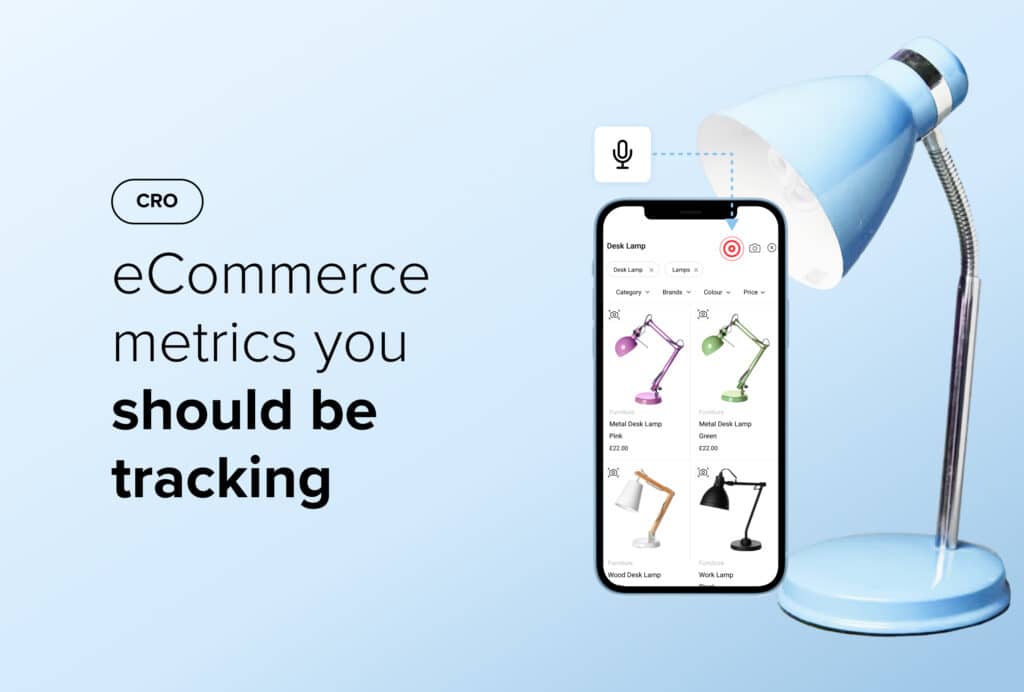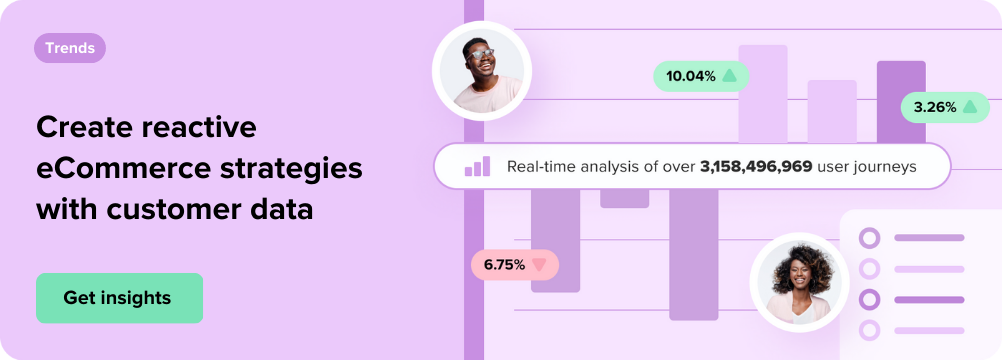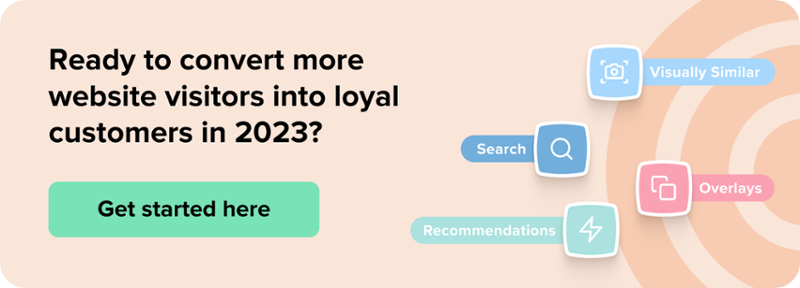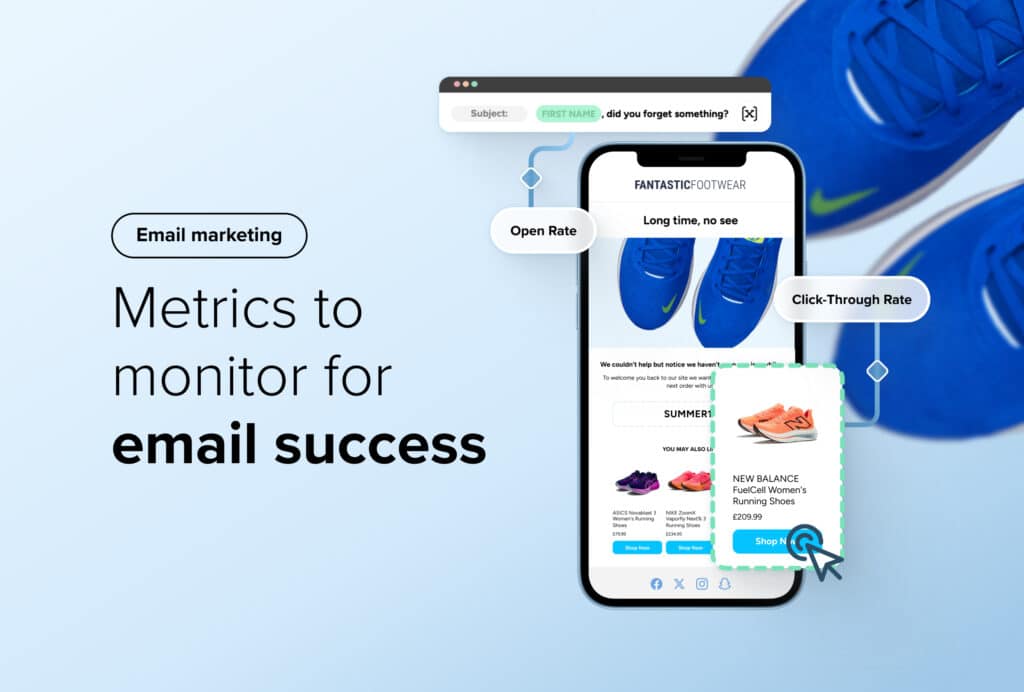The CRO Metrics to Measure for eCommerce Success
By Bethany Llewellyn • Last updated: Wednesday Aug 14th, 2024

There are a variety of ways you can measure the success of your eCommerce business and website. The best eCommerce businesses already know and are measuring these metrics. But when these metrics show poor performance in their criteria, what eCommerce businesses might not know is how to use these metrics to improve poor performance and that’s what really matters.
By measuring and using such a wide range of metrics, you can acquire a goldmine of information to transform your marketing strategy and edge out the competition.

The importance of measuring CRO metrics
For many eCommerce business owners and marketing managers, terms like target audience, site performance, conversion rate optimisation (CRO) and customer retention are used on a daily basis.
These metrics are measured as a way to help provide excellent customer service, sell more products and generate revenue.
But to reach your business goals, you’ll need to improve your website’s overall performance and identify opportunities for optimisation in key areas ranging from:
- Traffic sources
- Device types
- Interactions per visit
- Cost per conversion
- Bounce rate
By monitoring important metrics like these, you’re able to define the next steps you need to take for success. This data can help you to do this by:
- Highlighting pain points on your eCommerce site
- Identifying opportunities for improvement
- Improving your understanding of the user journey
- Discovering improvements you can make to the customer’s on-site experience
- Helping you to set clear and measurable goals
- Informing your PPC spend to help maximise results
With a deeper understanding of how your website performs, you can leverage this information to further develop your marketing campaigns and business strategy.
Suggested reading: For more information on what your website needs to succeed, check out our blog, 6 Functional Requirements for eCommerce Website Success.
Metrics to measure and improve for eCommerce success
You’ve measured key metrics on your site to have a better understanding of its performance, but now you want to put it into action.
Below we’ve highlighted five metrics you should be measuring, and how you can improve them for optimal performance and success.
1. Search speed and load times
Improving your site speed not only contributes to higher Google rankings and better SEO success, but it’s also vital to driving sales: 40% of visitors abandon a website that takes more than 3 seconds to load.¹
Having a website with slow load times, sluggish search results, or difficult navigation can have a significant impact on your conversion rate and consumer satisfaction as customers head elsewhere to find the experience they’re looking for.
So how can you ensure your site is optimised for a speedy experience? You can start by:
- Monitoring page performance: Analyse the load time on each page of your website to highlight opportunities for optimisation and pinpoint what could be causing slower load times.
- Optimising your search: Remove friction in the buying process by using an AI-powered Search tool that returns results within seconds.
- Reviewing your design: Optimise your site images and implement a minimalistic design to avoid large media files and keep your site running smoothly.
- Consider all devices: Ensure your site is optimised for a speedy experience no matter where your shoppers browse from, whether on a desktop or a mobile device.
According to Google and Deloitte, improving your page loading speed by 0.1 seconds can boost your conversion rate by 8%.²
Improving the speed of your site will not only reduce high bounce rates but also allow you to provide a seamless on-site experience that will encourage visitors to return to your site time and again.
Considerations: Explore Salesfire’s range of tools that can help turn your website traffic into revenue.
2. Conversion rate
Conversion rate is a key performance metric. Using it to measure and improve your website correlates with success, and since conversion is defined as the desired action a visitor takes on your website, optimising how this metric performs is key.
You’ve invested your time, effort and resource in directing users towards your eCommerce site, whether organically or through PPC, and now you want to maximise the value of your customers and guide them through the buying process to complete checkout.
But, what is a conversion? This could be:
- Clicking a banner or text ad
- Completing a purchase
- Exploring product pages
- Signing up for your newsletter
- Creating an account
No matter your goal, optimising your whole site will ensure you provide a seamless on-site user journey and in return, secure more sales.
What you can do: Utilise conversion tools like Overlays, Recommendations and Digital Assistant on your website to help turn your hard-earned traffic into revenue.
By deploying intelligent campaigns that are triggered based on user behaviour, you can ensure you support the customer’s on-site journey and guide them through the buying process.
Suggested reading: For a handy run-down of how you can optimise your conversation rate across your eCommerce site, check out our blog: The Ultimate eCommerce Conversion Rate Optimisation Checklist.
3. On-site engagement
Your engagement rates offer an insight into how your on-site campaigns and messaging are influencing consumers to complete desired actions.
If users aren’t engaging with your products, it’s likely they aren’t purchasing them either. Some engagement metrics you can measure on your site:
- Page views
- Average session duration
- Bounce rates
- Traffic sources
- Percentage of new and returning users
While measuring the success of your engagement and messaging can be one of the harder metrics to analyse, you can also look for signs in others ways.
For example, have you noticed various customer queries off the back of a campaign or ad you recently set live? If that’s the case, the language you have used could be misleading or not clear enough.
Or, you may have noticed higher click-through rates but reduced orders or increased bounce rates. This could be due to your messaging being targeted at the wrong audiences.
What you can do: The first step is to identify and review your target audience and buyer personas to understand your customer wants and needs.
This can be achieved by segmenting your visitors by characteristics such as location, age or on-site browsing behaviour. This gives you an opportunity to A/B test campaigns to evaluate how different messages resonate with your customers and which encourage the most engagement.
This allows you to provide a hyper-personalised experience and make decisions based on each category, such as tailored ads or landing pages, to maximise the value of each customer to your business.
By communicating directly to your intended target audience, you’ll see higher customer engagement and increased conversions.
Suggested reading: To make sure your website and marketing campaigns are reaching the right people in the right way, read our blog: How to Personalise the Customer Journey with Targeted Messaging.
4. Customer retention
Customer volatility is at an all time high, with 30% of customers claiming they’re increasingly likely to try out a new brand.³ In this context, retaining customers is more crucial than ever before.
Oftentimes, your customer retention rate can be directly linked to changing consumer behaviour and how well your site stays not just up-to-date, but ahead of the curve.
Once you understand what influences your customers’ buying decisions, you can fill gaps in the market, identify opportunities to secure more sales and provide excellent customer service to retain users and keep them coming back for more.
What you can do: Use data and analytics tools like Trends or Google Analytics that allow you to monitor and predict customers’ behaviour.
This is especially useful when planning campaigns around key dates like Valentine’s Day, Black Friday or Christmas.
From here, you can analyse different shopping patterns in the form of consumer behaviour metrics, including:
- The total number of visitors to your site
- The length of time on site
- The number of returning visitors
As you gather data, you’ll be able to categorise and segment each visitor in order to provide a tailored experience that will maximise revenue.
Suggested reading: To get into detail about using your customer data, read our Guide to Understanding eCommerce Customer data — And What it Can Do for You.
5. Basket abandonment rate
The average shopping cart abandonment rate is 69.57%. That’s around 7/10 customers who abandon their order.⁴
This ultimately means lost sales. By measuring your cart abandonment, you’re able to gain insight into how intuitive and trustworthy your checkout process is and how you can improve it.
Maybe your checkout forms are too lengthy, maybe there are unexpected costs associated with orders or it could be that the visitor was simply browsing. Whatever the reason for an abandoned order, there’s a solution.
A huge 63% of abandoned merchandise can be recovered by online retailers, so you want to ensure you’re optimising your retargeting emails for optimum success.⁵
Basket abandonment email campaigns are one of the most cost-effective ways to nurture and reinject users back into the sales process.
Firstly, let’s highlight what an email marketing strategy can do for you:
- Lead generation
- Reducing basket abandonment
- Strengthening customer relationships
- Brand awareness
Tracking your email marketing helps you better understand how your subscribers are engaging with your content. Once you have an understanding of measurable metrics such as open rate, click-through rate or bounce rates, you’can identify opportunities to drive more engagement.
And together with testing messaging for email campaigns, for example, you can come up with the ideas to make the most of these opportunities.
These performance indicators are used to measure the behaviour, activities and performance of your campaigns and allows a basis to be formed that supports the achievement of your overall business objectives.
Pro tip: If you notice lower-than-average rates on your email marketing metrics, you can try A/B testing in a variety of areas, such as your subject line or CTA copy.
By reporting on your findings, you’ll be able to make tweaks to your strategy and optimise your efforts further.
Use and improve how you use metrics with Salesfire
You can measure all the metrics in the world, but if you’re not a) measuring them in the right way and b) using them to improve your website and drive sales, then what’s the point?
From your site speed to email marketing efforts, we’ve covered some key metrics you can measure and most importantly, how to optimise your conversions.
1 How Loading Time Affects Your Bottom Line | Neil Patel
2 Milliseconds make millions | Google and Deloitte
3 PwC Customer Loyalty Survey 2022
4 48 cart abandonment rate statistics 2022 | Baymard Institue
To see how Salesfire can help you generate more revenue and optimise your eCommerce site, speak to one of our experts at enquiries@salesfire.com or book a free consultation.




